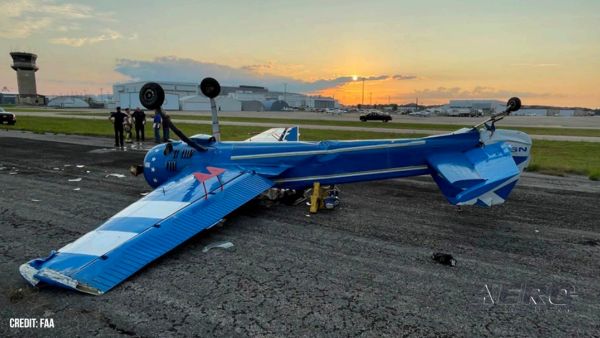Wed, Jul 03, 2019
Called The First Building Block To Enable Safe VTOL Operation And New Air Mobility In Europe
On July 2, 2019, EASA released what it says is the first building block to enable the safe operation of hybrid and electrical vertical take-off and landing (VTOL) aircraft.

"We are actively engaging with the industry to develop the right technical requirements to take benefit of the new technologies bringing safety and environmental benefits to the community," said EASA Executive Director Patrick Ky. "The establishment of a common set of conditions for the certification of these new concepts of vehicles will enable a fair competition on the European market as well as clarity for future manufacturers and their investors.”
The final Special Condition published Tuesday provides the framework for manufacturers to develop innovative VTOL aircraft. It applies to person-carrying VTOL heavier-than-air aircraft in the small category, with lift/thrust units used to generate powered lift and control. The small category covers aircraft with a passenger seating configuration of 9 or less and a maximum certified take-off mass up to 3,175 kg (7,000 pounds). The Special Condition was opened for public consultation in October 2018 and widely consulted with stakeholders worldwide. The certification objectives are made dependent on the type of operation in order to provide flexibility and proportionally and also to give a clear visibility to the industry of the objectives for their designs.

Two certification categories are introduced in this special condition namely Basic and Enhanced and are linked to the intended type of operations. A direct relationship between airworthiness and types of operations already exist, for example when certifying for VFR or IFR operations. Introducing this additional link provides greater scalability in setting safety objectives and allows to assign the highest safety levels of Category Enhanced to protection of third-parties when flying over congested areas and commercial air transport of passengers. The operational rules can then be built on demonstrated aircraft safety levels and adapted as necessary to local particularities. The Agency engaged with its international partners in order to work together towards achieving common standards.
The current regulatory framework has initially been designed for conventional fixed wing aircraft, rotorcraft, balloons and sailplanes. Propulsion was mostly provided by piston or turbine engines using fossil fuels. The introduction of new technologies and concepts of air transport requires to revisit this framework. The Agency is currently consulting with its Advisory Bodies on a new Rulemaking tasks (RMT.0731) to develop rules or amend existing ones, to address new technologies and operational air transport concepts, with the objective to be agile and to adapt the regulatory framework in line with Performance Based Regulations principles. The experience gained through the application of the VTOL special condition will feed into the Rulemaking process.
(Source: EASA news release. Images from file)
More News
From 2021: The Inside Skinny On What Being An ANN Oshkosh Stringer Is All About By ANN Senior Stringer Extraordinare, Gene Yarbrough The annual gathering at Oshkosh is a right of p>[...]
Pilot Asked The Mechanic To Go For A Test Flight Around The Airport Traffic Pattern With Him For A Touch-And-Go Landing, And Then A Full-Stop Landing On May 7, 2025, about 1600 eas>[...]
From 2010 (YouTube Edition): Skiles Reflects On His Ring-Side Seat To An Historic Event Jeff Skiles, First Officer of US Airways Flight 1549, "The Miracle on the Hudson," was the g>[...]
“The FAA conducted a comprehensive safety review of the SpaceX Starship Flight 8 mishap and determined that the company has satisfactorily addressed the causes of the mishap,>[...]
Fuel Remaining A phrase used by either pilots or controllers when relating to the fuel remaining on board until actual fuel exhaustion. When transmitting such information in respon>[...]
 Oshkosh Memories: An Aero-News Stringer Perspective
Oshkosh Memories: An Aero-News Stringer Perspective NTSB Prelim: Diamond Aircraft Ind Inc DA 40 NG
NTSB Prelim: Diamond Aircraft Ind Inc DA 40 NG Classic Aero-TV: US Airways Jeff Skiles-Making History and Looking To The Future
Classic Aero-TV: US Airways Jeff Skiles-Making History and Looking To The Future Aero-News: Quote of the Day (05.26.25)
Aero-News: Quote of the Day (05.26.25) ANN's Daily Aero-Term (05.26.25): Fuel Remaining
ANN's Daily Aero-Term (05.26.25): Fuel Remaining




